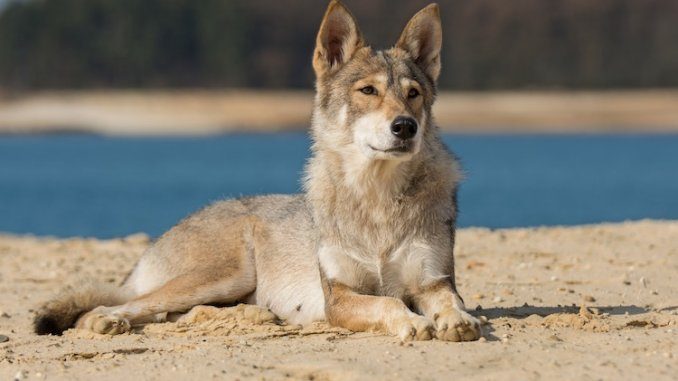
The Tamaskan Dog, also known as the Tam, is a breed of dog that has been selectively bred to look like a wolf dog.
These wolf-like dogs are not purebred as they are crossbred with many other dog breeds including the:
- Siberian Husky
- German Shepherd
- Alaskan Malamute
There is also some debate about other dog breeds that have been bred into the black grey, red-grey, or wolf grey coated bloodline. Some have speculated the following two breeds of dog too:
- Czechoslovakian Wolfdog
- Finnish Origin Huskies
Although there are many Wolfdogs, these Tamaskan dogs are distinctly separate, a unique breed with their own fanbase and breed association.
Growing in popularity since the 1980s, more questions are starting to be asked about these wonderful Tamaskan wolf dogs.
But what is there to know about these incredible wolf-like dogs? This article contains seven must-know facts about the Tamaskan dog!
TABLE OF CONTENTS
1. The Tamaskan Dog Was First Bred in 1980
Tamaskans Have A Very Short (And Yet Fascinating) 40 Year History
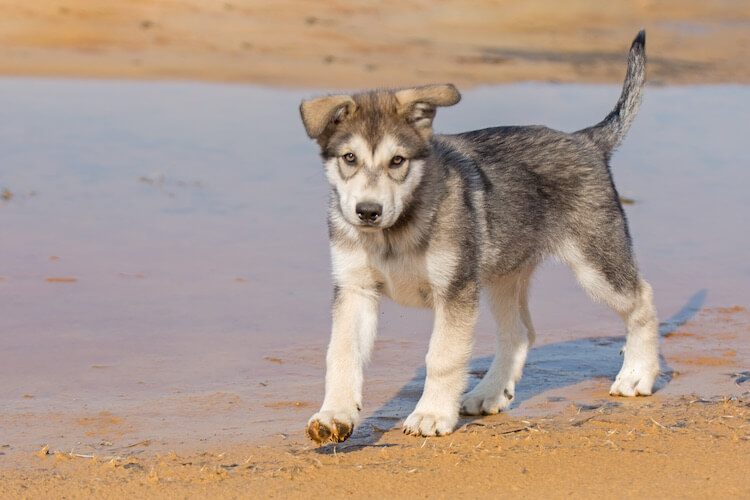
This dog the Tamaskan was first seen in the 1980s making them a relatively recent dog breed; when compared to some dog breeds!
Tamaskan dogs were first bred when two breeders decided to import a group of five dogs (of Husky origin) into the UK from America. Lynn Hardey and Jennie Saxby are acclaimed to be the Tamaskan dog breed’s founders and started the Tamaskan Dog Register.
The Tamaskan dog breeders started by importing five huskies, where were selectively bred, in an attempt to breed a dog with the looks of a wolf, but the temperament of an everyday working dog.
Over multiple generations of breeding the best dog stock (i.e. best temperament and health from other dog breeds), the German Shepherd and Alaskan Malamute were bred into the bloodline, alongside the original Czechoslovakian wolfdog.
As a result of this breeding program, the first generation of Tamaskan puppies was born (F1). All from those original five dogs!
During the 1990s, it was relatively common for one litter of Tamaskan puppies to look completely different from another. This was because there wasn’t a standardized breed profile for the Tamaskan dog and its wolf-like appearance and a lack of approved breeding stock. For example, a Tamaskan can have a black-grey, red-grey, or wolf grey coat.
It is this early genetic variation and lack of inbreeding that results in the Tamaskan’s healthy gene pool we know today. It is for this same reason that this left-alone dog breed has little to no genetic diseases.
However, health issues or more serious health problems can develop, such as degenerative myelopathy and hip dysplasia.
If your Tamaskan remains free of any such serious health issues or health problems, it will live on average for 15 years.
Towards the start of the 21st century, Tamaskan breeders began to work together, breeding between litters of Tamaskan puppies (i.e. F2 and F3) to create a consistent breed with a wolf-like appearance and working dog temperament.
Since their first breeding in the 1980s, the Tamaskan dog has been slowly growing in popularity with fans across multiple countries including: America, Germany, Canada, France, and the United Kingdom.
2. The Tamaskan Dog Is Famous
This Dog Breed Is North Caroline State Football Team’s Mascot
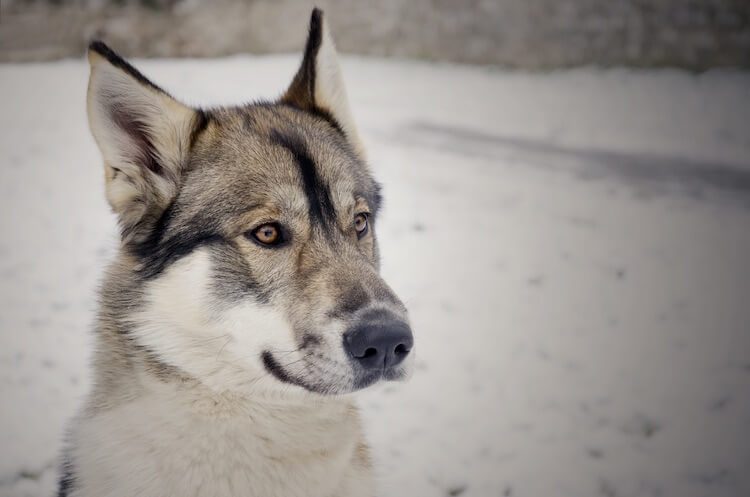
Over the past forty years, the Tamaskan dog has made its way into the mainstream media.
Since 2010 a Tamaskan dog named Wave became the live Mascot of the North Caroline State Football Team.
The Tamaskan can also often be seen in the music industry, for example in music videos for groups such as the Lucretia Choir.
A dog breed of many talents, they have been seen in theatre and on Broadway. In 2016, a Tamaskan dog named Luchta played the role of “The Wolf” in Arthur Miller’s The Crucible.
They are often seen in media because of their wolf-like appearance, but also due to their highly trainable working dog nature.
These dogs were bred to be everyday working dogs, and consequently, they are incredibly trainable.
The Tamaskan dog breed has a natural curiosity when it comes to learning, and consequently it may be beneficial to use tools such as a clicker to encourage their learning.
It is also important to know that the Tamaskan are incredibly loyal dogs, and so punishment should never be used. Using positive reinforcement dog training with Tamaskan puppies is the best way to guarantee a healthy and happy relationship with your dog.
3. They Are Not A Purebred Dog
But Are Recognized In The Foundation Stock Service
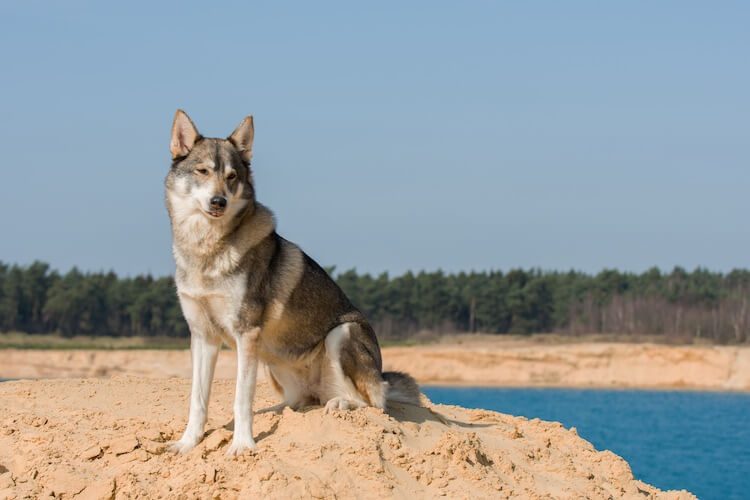
Although the Tamaskan is a unique breed, it is not considered a purebred dog. Due to its easily traced pedigree (i.e. the crossbreed heritage), Tamaskans are often considered to be crossbreeds (i.e. hybrids).
Consequently, Tamaskans are not recognized by:
- The Fédération Cynologique Internationale
- International Kennel Club
- The Kennel Club (UK)
However, the Tamaskan dog is recognized by the American Rare Breed Association and is a member of the American Kennel Club Foundation Stock Service.
Since 2006, the Tamaskan has had its own breed club; the Tamaskan Dog Register (an international breed club).
The site acts as an international database for the Tamaskan dog breed, issuing registration paperwork and allowing Tamaskan owners to be matched with breeders near them.
Despite the fact that Tamaskan puppies cannot be sold as kennel club registered, this doesn’t stop dog breeders from giving them premium prices, selling between $600 to $800 USD per puppy (with a litter size of between 6-10 Tamaskan puppies).
If you would prefer to rescue a Tamaskan dog as opposed to adopting, you may struggle to find one of these dogs in your local shelter!
It may be a good idea to check specialized breed pages, such as Tamaskan Rescue (a community page that rescues these dogs all around the world)!
4. The Tamaskan Will Exercise For 90 Minutes Daily
Just Like Their Siberian Husky Parents!
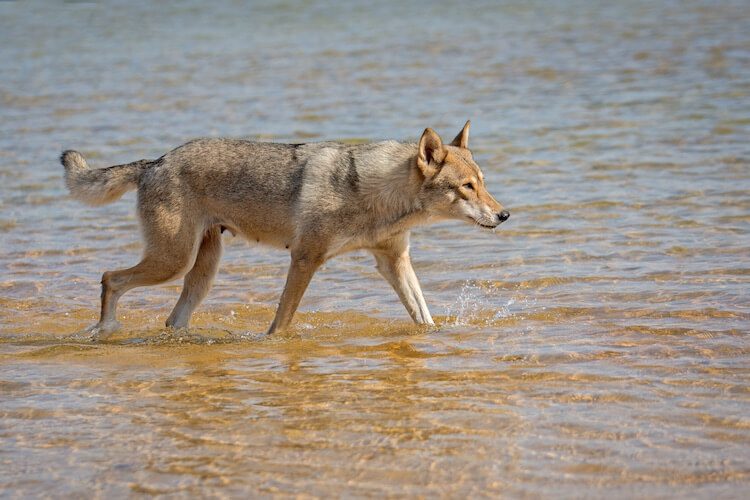
Due to their sled dog linage, these working dogs are incredibly active!
Tamaskans need between 60 and 90 minutes of exercise every day, and so are better suited to active individuals or families who can give them the walks they crave.
On average, Tamaskans need around 18 miles of exercise per week.
One of the benefits of these walks is the build-up of muscle tone in the Tamaskan dog’s body, essential for this dog breed as they are muscular in wolf-like appearance.
Tamaskan owners may also consider running, hiking, or supervised swimming with their dog in an attempt to chip away some of that unrelenting working-dog energy.
Tamaskans make excellent agility champions, thriving on the challenge, and will also enjoy working – thanks to their German Shepherd working dog lineage.
They make wonderful herding dogs, therefore it may be a good idea to work your dog to encourage mental as well as physical health.
5. Tamaskans Come In Four Different Colors
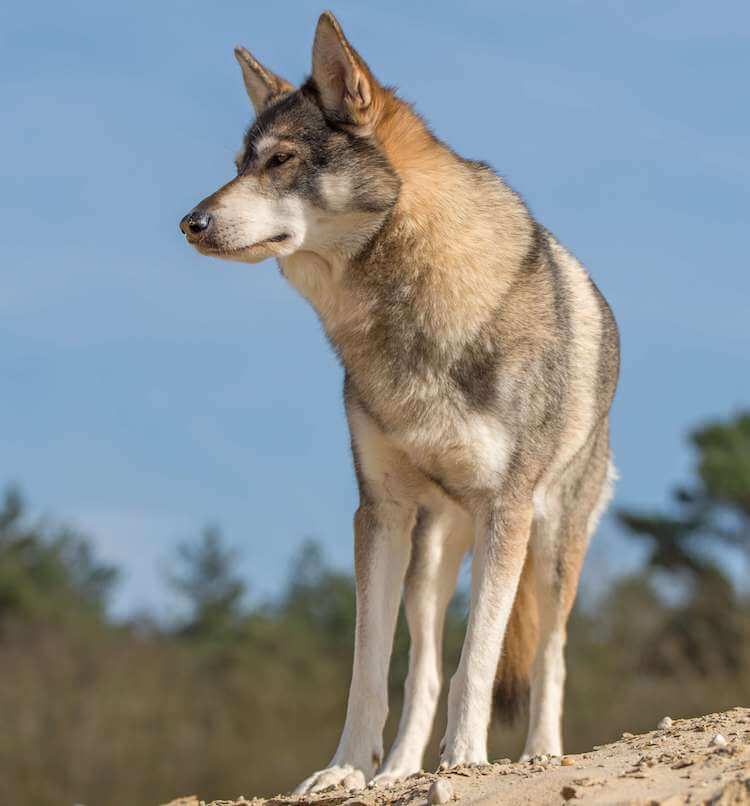
The Tamaskan looks exactly like a wolf, so you should consider using a wolf name for your dog.
Standing around 24 to 28 inches tall and weighing between 55 and 88 lb, this is a large dog breed.
Although, when there wasn’t a recognized Tamaskan dog breed standard, there were some instances of them weighing up to 100lb and standing around 33 inches tall, making them a giant working dog.
Female Tamaskans are slightly smaller than males and have a distinctly feminine look, while male Tamaskans are much more heavyset and sculpted.
The Tamaskan dog breed has four distinctive coat colors:
- Red Grey
- Wolf Grey
- Black Grey
- White
Tamaskan dogs have a thick double coat, like that of an Alaskan Malamute or a Siberian Husky, and so are very fluffy to the touch.
With a long black nose and triangular ears who can forget the impressive tufted tail and beautiful appearance of a Tamaskan?!
Tamaskans have warm, almond-shaped eyes that can be either brown, hazel, or amber. According to dog breed standards, blue eyes or mismatched eyes are not acceptable for a pedigree dog.
6. Tamaskans Look Menacing
But Are Very Friendly & Affectionate
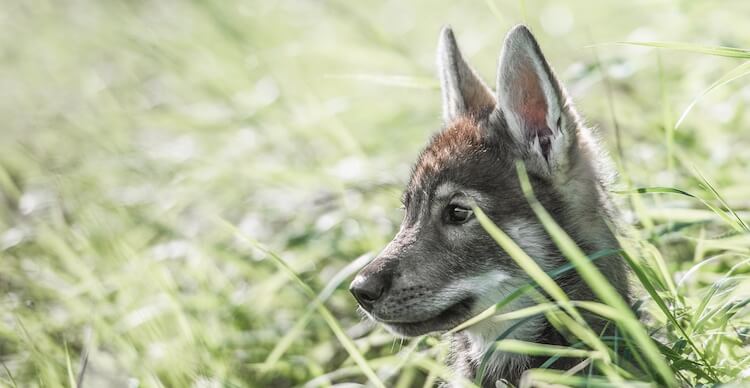
Tamaskan puppies love to play, it’s a great way for them to learn social skills as well as exercise their brain and bodies.
Despite the fact that the breed is not aggressive, their looks, like a wolf, may be a perfect deterrent for anyone looking to make trouble, although they are more likely to be killed with kisses than anything else!
The Tamaskan may look like a fierce and angry wolf, but this dog breed is known to be a kind, loyal and affectionate good family dog.
Being excellent with children (playing gently and having great patience) Tamaskans are highly social dogs, and love to be at one with the family, rather than be left alone.
Due to their loyal and devoted nature, they can suffer from severe separation anxiety when left alone for long periods. This can be combatted by encouraging them, as Tamaskan puppies to be self-sufficient.
Beyond this, the Tamaskan is very intelligent and consequently does not do well with being bored. Being bred to work, with some of the world’s most intelligent dogs as ancestors (i.e. Huskies), makes a Tamaskan for one very bored dog if left unstimulated for long periods! Left even longer alone, and there is a serious risk of separation anxiety.
The Tamaskan can be aloof with strangers and may take a while to come around.
This can be aided with socialization as a puppy, your Tamaskan to as many people and places as possible while young can make for a motivated adult dog.
However, do not let the less desirable qualities of the Tamaskan dog put you off…
They love to be by their owner’s side, and their larger size and wolf-like appearance do not dissuade them from being lapdogs.
Enjoying the serenity of the countryside and loving nothing more than a good romp in the outdoors, as befits their Siberian Husky and Czechoslovakian wolfdog linage, Tamaskans love a good walk!
7. The Tamaskan Is Incredibly Low Maintenance
When It Comes to Food and Grooming – This Dog Breed Is Easy
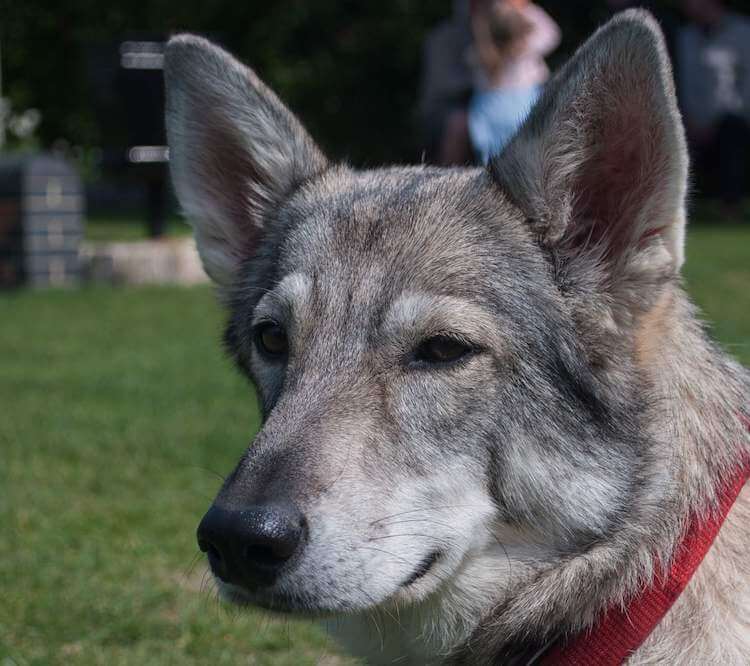
Beyond their everyday working-dog exercise requirements (which are anything but low maintenance), the Tamaskan dog breed needs very little else.
Tamaskans do well on a variety of diets, including dry, wet and raw.
If you choose to feed dry or wet commercial food, the food must be age-appropriate (i.e. puppy, adult, or senior dog) so as to avoid health issues.
Owners may also wish to consider a brand specifically formulated for working dogs. It should also be grain-free and high quality, as dogs struggle to digest a lot of the complex carbohydrates found in low-quality dog foods.
When it comes to grooming requirements, the Tamaskan dog breed is incredibly low maintenance:
- Tamaskans shed twice yearly and will need brushing every other day during this time.
- For the rest of the year, a Tamaskan will need brushing once weekly, if that, and bathing only when they get muddy.
The Tamaskan dog’s coat produces natural oils that clean the dog’s black grey, red-grey, or wolf grey coat. These oils should not be interfered with through bathing. Doing so could lead to health issues.
It is also not necessary to clip this dog, the Tamaskan, meaning that they are relatively fuss-free!
The Tamaskan will on occasion need their nails trimmed if they are more inactive, but with their recommended activity level the dog should be able to wear down their own claws.
Remember that nail trimming of any dog breed should only be done by a qualified professional, such as a groomer or a veterinarian. The Tamaskan dog is no exception.
As for more serious health problems, degenerative myelopathy and hip dysplasia are possible with Tamaskans.
Without any such serious health problems, the average lifespan for a Tamaskan is 15 years.
Summary
The Tamaskan dog is a smart, loyal companion, perfect for an individual or a good family looking for a high-octane wolf-like working dog.
These fun-loving dogs are perfect for anyone looking for a hiking, swimming, or jogging buddy!
However, if you are not up for their weekly mileage, perhaps consider a lower maintenance wolfdog, such as a Husky Cross or a Miniature Husky. And don’t forget that left alone for long periods, the Tamaskan dog breed can suffer from separation anxiety.
With patience, love (and a lot of exercise), the Tamaskan can thrive in the urban or city environment.
Do you have this dog breed at home? Thinking about getting a Tamaskan puppy? Or just a Tamaskan superfan! Leave us your thoughts on this breed in the comments.

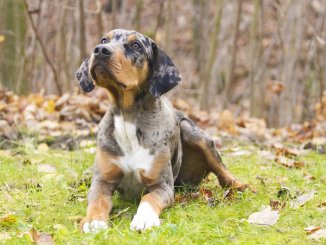

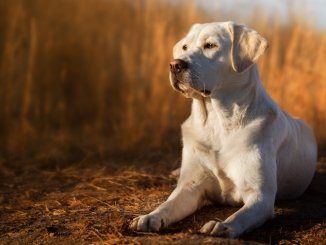
Hi I am very interested in getting a tamsin pup. I do walk a lot and had a beautiful German Shepherd which due to old age and being in pain I had to put down two years ago. Since then I have 2 very small dogs as companions (a morkie and a pugichon). Just wondering how would they get on together? Would the little ones get hurt in play?
If you get a larger breed as a puppy, they would be growing up with your two other companions. They would likely learn much of the way of the world from the other dogs, especially play.
As a puppy, they will be well-matched for size, so they will all gain confidence around each other. As the large breed grows, if they become too boisterous, the smaller dogs will likely tell them so and remove themselves from play.
You would expect the larger breed to learn very quickly that if they want play to continue, they need to be calmer and more gentle. Please feel free to ask any more questions about your potential new addition.
Yeah, where did you get the info that the Tamaskan is a part of Foundation Stock Service? They aren0t listed anywhere there.
My son rescued a two year old Temaskan I have the honour of taking care of her sometimes. I love her so much. We walk at a very natural
Conservation park She is complemented so often I pretend some of those complements are meant for me. At any rate she is wonderful.
Her beginning was rough for her. She is 5 now she does suffer separation anxiety so I try to take her with me.
My son has been looking for a tamaskan puppy for over two years have any ideas where we can get one?